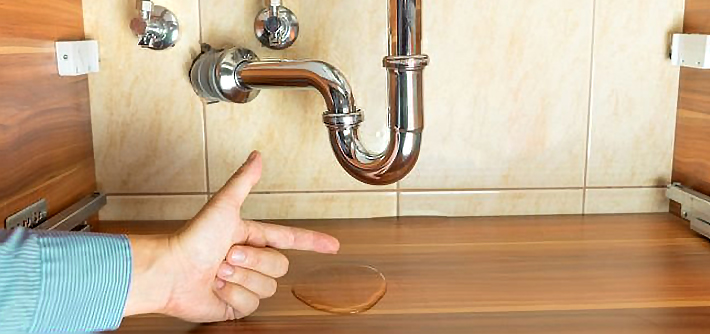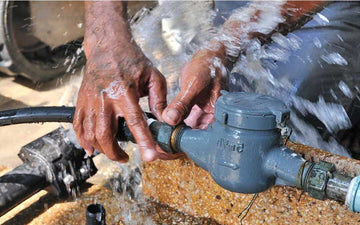In the complex and ever-evolving world of industry quality assurance, the role of real-time telemetry for leak detection has become increasingly critical. As industries lean towards more technological efficiencies, the demand for effective leak detection systems that provide instant data is surging. For industry QA professionals, understanding how real-time telemetry integrates into existing systems not only ensures safety but also enhances operational performance.
Real-time data acquisition helps in monitoring pipelines, gas lines, and even household plumbing systems, enabling immediate response to leaks that could lead to catastrophic failures or costly repairs. Given the current technological landscape, it is vital to stay updated on all the ways real-time telemetry can be capitalized upon.

The Importance of Real-Time Telemetry
Real-time telemetry is a powerful tool in the world of leak detection, offering live data transmission that significantly reduces the response time to potential threats. This technology empowers industry professionals to take proactive measures rather than reactive ones. The immediate access to telemetry data transforms the decision-making process, leading to increased safety and efficiency across various applications, from oil rigs to residential water systems.
A key application area is in petroleum pipelines, where telemetry can provide continuous monitoring. This minimizes environmental risks and enhances safety protocols. For example, water sensors in pipelines can detect anomalies in pressure and flow that signal potential leaks.
How Real-Time Telemetry Works
The mechanics of real-time telemetry involve using sensors that relay data instantaneously to control centers. This data is typically collected using various transducers placed along key points of a system, like a pipeline or a chemical processing plant. These sensors communicate with centralized data systems that automatically analyze the input for signs of leakage, like changes in pressure or unexpected flow variations.
By utilizing the latest in sensor technology, which you can read more about on detection thresholds, industries can tailor their leak detection systems to meet specific needs. This enhances the efficiency of the systems and ensures greater adaptability to new technological trends.
Applications in Industry
The application of real-time telemetry in industries is broad, touching sectors such as oil and gas, chemical processing, and even residential water safety. In the oil and gas industry, for example, the integrity of long-distance pipelines can be continuously monitored, preventing leaks that can cause significant environmental damage and financial loss.
Another innovative application involves smart leak detectors in residential settings. These devices utilize telemetry to inform homeowners of leaks, helping prevent water damage and reduce repair costs. Such technology not only saves money but also conserves water, contributing to sustainability efforts.
Benefits Over Traditional Methods
Traditional methods of leak detection often relied on periodic manual inspections and outdated alarms which could be prone to human error or delay. Real-time telemetry, however, provides constant monitoring and data analysis, drastically improving the reliability and accuracy of leak detection efforts.
For industry QA professionals, this means that compliance and standards enforcement become far smoother processes. With immediate insights made possible through telemetry, the response to potential hazards is swift, reducing the time taken to mitigate problems and ensuring that quality standards are continuously met.
Challenges and Solutions
Despite its merits, implementing real-time telemetry comes with challenges. High initial costs, data management complexities, and the need for specialized skills can be daunting. However, solutions are emerging, with technological advances reducing costs and user-friendly interfaces making data management more intuitive.
Furthermore, investment in training personnel to effectively use these systems is crucial. Emphasizing ongoing education and development in telemetry technologies ensures that industry professionals are well-equipped to maximize the potential of these powerful tools.
Future of Real-Time Telemetry
The future of real-time telemetry in leak detection looks promising, with advances in AI and IoT poised to further enhance these systems' capability. Predictive analytics could soon be incorporated, allowing systems not only to detect leaks but to anticipate them before they occur.
For the QA industry, this represents an exciting frontier where technology and innovation converge. As these technologies evolve, it will be essential for industry standards and regulations to adapt accordingly to ensure safety and performance continue to improve.
The journey of real-time telemetry for leak detection is one of constant evolution and adaptation. For more insights on this evolving technology, visit smart fluid detection systems.

FAQ Section
What is real-time telemetry?
Real-time telemetry is the continuous collection and transmission of data from sensors to a central system where it can be monitored and analyzed instantly.
How does real-time telemetry benefit industries?
This technology allows for immediate detection and response to leaks, improving safety, reducing costs, and ensuring compliance with industry standards.
Can real-time telemetry be used in residential settings?
Yes, water sensors are increasingly being used in homes to detect leaks and prevent water damage more efficiently.






